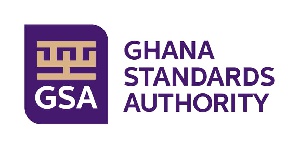The Ghana Standards Authority (GSA) has sensitised farmers and other stakeholders in the agricultural sector in the Northern, North East and Savannah regions on the causes and effects of aflatoxin, and how to reduce its contamination of grains.
The event formed part of the National Aflatoxin Sensitization and Management (NASAM) project, being undertaken by the GSA, with support from Alliance for Green Revolution in Africa to ensure improved production and handling of grains in the country for food safety and security.
Mr Derry Dontoh, the Head of Mycotoxins Laboratory at GSA, who spoke during the forum at Nyankpala, near Tamale, explained that aflatoxins were natural toxins produced from moulds naturally found in the air, soil, on insects and plants.
He said aflatoxins were present in grains such as groundnuts, maize, and sorghum and caused various diseases including cancer.
Some international markets, including the European Union, have been rejecting grains from the country because of the detection of the presence of aflatoxins in them.
Dr Daniel Agbetiameh, the Technical Consultant for the Aflasafe Technology Transfer and Commercialization Project, advised farmers and agricultural value-chain actors to ensure improved storage system for grains to provide protection against aflatoxins.
Dr Agbetiameh advised farmers to sort out their produce to remove insects and spoilt grains to reduce aflatoxin levels in them.
Mrs Joyce Okoree, the Director of Standards at GSA, said the sensitisation was to help make grains safe for consumption while improving their market value.
She said this would also translate to high incomes for farmers urging them to adhere to good agricultural practices to reduce aflatoxin contamination of grains.
Mr Fuseini Iddi, a maize and groundnut farmer from Kasuliyili in the Tolon District, expressed appreciation to GSA for sensitising them on best agricultural practices to reduce aflatoxin contamination.
He said he would improve his cropping operations from land preparation to storage to reduce contamination.
Regional News of Monday, 15 April 2019
Source: ghananewsagency.org

















